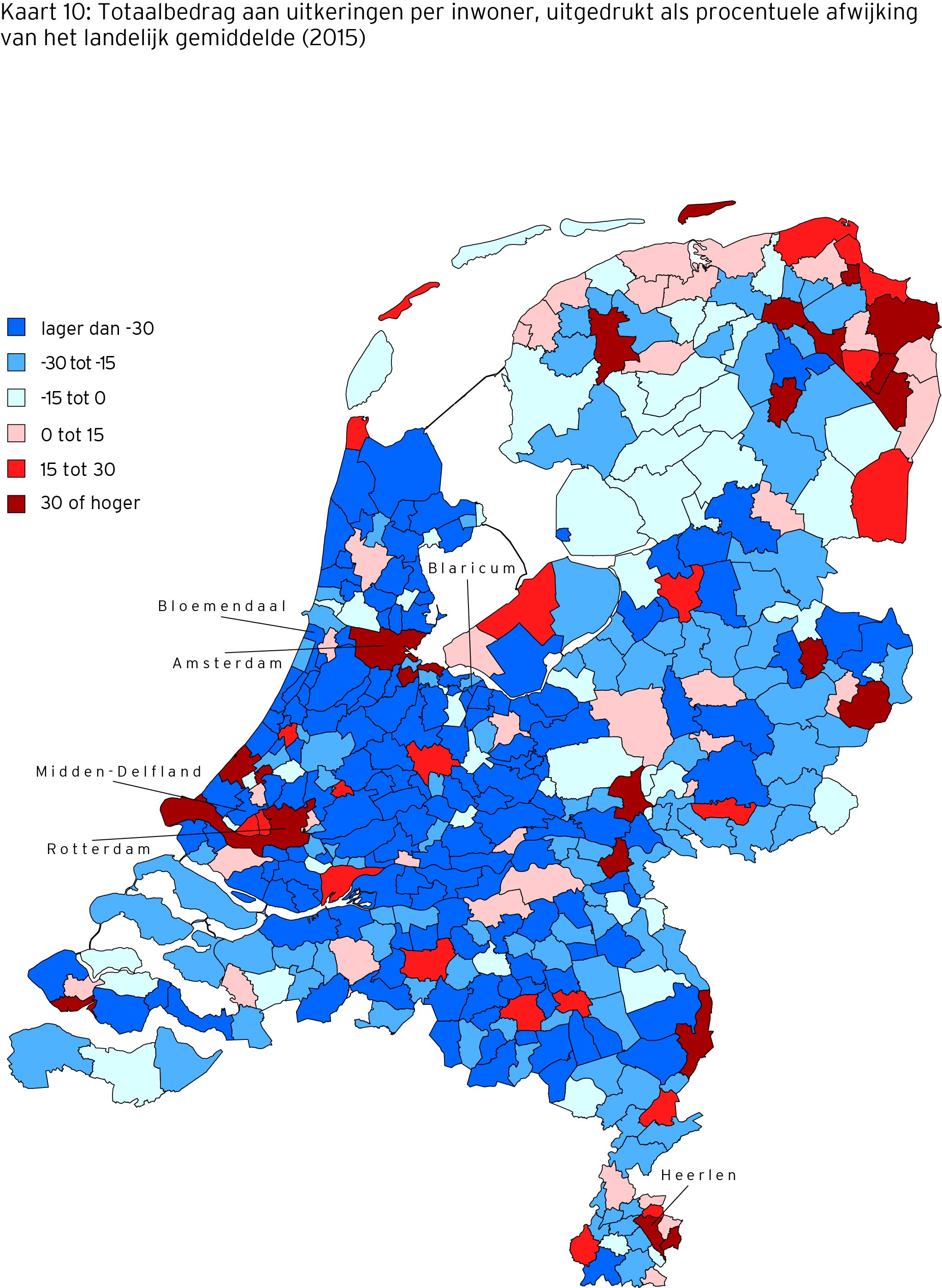Municipalities receive €33 billion via 61 government grants
Heerlen receives €3,468 in government grants per capita. This is over 78 percent more than the national average of €1,947. Bloemendaal, Midden-Delfland and Blaricum are the only municipalities to receive less than €1,000 per capita (€895, €948 and €990 respectively). This information comes from the Atlas of Government Grants 2015, which is published today by COELO, the University of Groningen’s Centre for Research on Local Government Economics.
Heerlen’s weak social structure and its function as a centre for the surrounding area entails higher costs. In addition, houses there are worth less, which means less revenue in property tax. This explains the high amount that is paid to the municipality. In proportion, large municipalities and municipalities in North-East Groningen, North Friesland and South Limburg receive a lot of money from the government (see attached map). The government expects municipalities such as Bloemendaal, Midden-Delfland and Blaricum, on the other hand, to have little in the way of expenses and to be able to collect more money through local taxes.

Dozens of grants
On average, municipalities cover only eight percent of their expenses with local taxes. Central government is their most important source of funding. This year they have received €33 billion from the government via 61 different grants. Six billion euros comes from specific grants (earmarked grants) and 27 billion from the Municipality Fund (gemeentefonds), which municipalities can spend as they see fit. At €14 billion, the general grant is the largest grant within the Municipality Fund. A further 31 decentralization grants (€1 billion), five integration grants (€11 billion) and four other grants (€0.1 billion) are allocated via the Municipality Fund.
More money due to new responsibilities
In comparison with last year, the Municipality Fund has grown by almost 50 percent (€8.5 billion). This growth is partly due to extra funding and partly because specific grants have been scrapped and added to the Municipality Fund. Municipalities have received an extra €4.7 billion from the government this year. This is because they have been assigned new responsibilities (youth care, participation and care for the long-term sick and elderly). The extra funding works out as less than what these new responsibilities cost last year.
More information
Contact: Maarten Allers
For the amounts per municipality, see www.coelo.nl.
K. Kwakkel and M.A. Allers, Atlas rijksuitkeringen aan gemeenten 2015, COELO, Groningen.
| Last modified: | 21 June 2022 08.23 a.m. |
More news
-
25 April 2024
Lineke Sneller appointed as Professor of Practice of Digitalization & AI in Accounting and Auditing
The Faculty of Economics and Business (FEB) is pleased to announce that as of 1 May, professor Lineke Sneller will be appointed as Professor Practice of Digitalization & AI in Accounting and Auditing. The chair is situated within the department of...
-
25 April 2024
Jenny van Doorn and co-authors receive 2024 Weitz-Winer-O’Dell Award
Jenny van Doorn and co-authors Martin Mende, Maura L. Scott (both Florida State University), Dhruv Grewal (Babson College) and Ilana Shanks (Stony Brook University) have won the 2024 Weitz-Winer-O’Dell Award. They received the award for their paper...
-
19 April 2024
New thesis prize for master's students of Economics and Business
How can we encourage economics and business students to deal with important societal challenges in their master's thesis? The 14 Dutch faculties of economics and business, united in the Council of Deans in Economics and Business (DEB), have set up...
